Choosing the right fabric for uniforms is crucial for ensuring comfort, durability, and practicality. Different fabrics offer varying benefits depending on the specific needs of the job. This article explores the best fabrics for uniforms and their unique advantages.
Cotton is a popular choice for uniforms due to its comfort and breathability.
Benefits
Comfort: Cotton is soft and comfortable, making it ideal for prolonged wear.
Breathability: It allows air to circulate, keeping the wearer cool and reducing sweat.
Hypoallergenic: Cotton is less likely to cause allergic reactions, making it suitable for sensitive skin.
Drawbacks
Wrinkling: Cotton tends to wrinkle easily, which can affect the uniform's appearance.
Shrinkage: Without proper care, cotton garments can shrink after washing.
Polyester is a synthetic fabric known for its durability and resistance to wrinkles.
Benefits
Durability: Polyester is strong and resistant to wear and tear, extending the life of the uniform.
Wrinkle Resistance: It maintains a crisp, professional appearance with minimal ironing.
Quick Drying: Polyester dries quickly, making it practical for active work environments.
Drawbacks
Breathability: Polyester is less breathable than natural fabrics, which can lead to discomfort in hot conditions.
Odor Retention: It can retain odors more than other fabrics, requiring regular washing.
Blended fabrics, such as poly-cotton, combine the benefits of multiple materials.
Benefits
Balanced Qualities: Blended fabrics offer the comfort of cotton and the durability of polyester.
Cost-Effective: They are often more affordable than pure natural fabrics.
Easy Care: Blended fabrics are generally easy to maintain, with reduced shrinkage and wrinkling.
Drawbacks
Heat Sensitivity: Some blends can be sensitive to high temperatures, affecting their durability.
Varied Quality: The quality of blended fabrics can vary, so it’s important to choose a reputable supplier.
Wool is often used in uniforms that require a more formal or sophisticated look.
Benefits
Insulation: Wool provides excellent insulation, making it ideal for colder environments.
Appearance: It offers a professional, polished look.
Natural Fiber: Wool is a natural, renewable resource, making it an eco-friendly option.
Drawbacks
Maintenance: Wool requires special care, including dry cleaning and careful storage.
Cost: It is generally more expensive than synthetic fabrics.
Performance fabrics are designed for specific functionalities, such as moisture-wicking or antibacterial properties.
Benefits
Specialized Features: These fabrics are tailored to meet specific needs, such as staying dry or reducing bacteria.
Comfort: They often provide enhanced comfort through features like stretch and flexibility.
Durability: Performance fabrics are built to withstand rigorous use, maintaining their quality over time.
Drawbacks
Cost: They can be more expensive due to their specialized nature.
Availability: These fabrics may not be as widely available as more common materials.
Selecting the best fabric for a uniform depends on the specific requirements of the job, including comfort, durability, and ease of maintenance. Cotton, polyester, blended fabrics, wool, and performance fabrics each offer distinct advantages and drawbacks. Assessing the specific needs of your workforce will help determine the most suitable choice. For further assistance or to explore a wide range of uniform fabrics, please contact us. To ensure high-quality uniforms tailored to your needs, consult your trusted supplier.
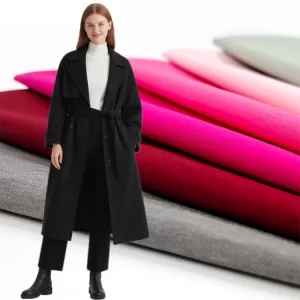 Blend Fabric Coat Pant Men Suit Women Suit Cotton Nylon Fabric
Blend Fabric Coat Pant Men Suit Women Suit Cotton Nylon Fabric 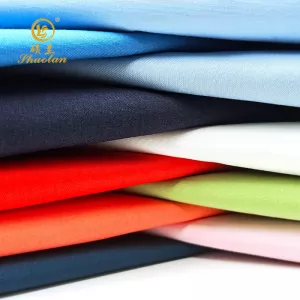 Factory Supply Custom TC Twill Suiting Woven Cotton Workwear Shirt Fabric
Factory Supply Custom TC Twill Suiting Woven Cotton Workwear Shirt Fabric 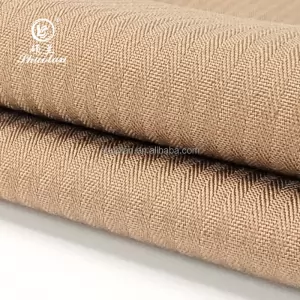 Factory Outlet Eco-friendly Smooth Surface Plain Combed Shirting Trouser Pocketing Polyester Cotton Fabric
Factory Outlet Eco-friendly Smooth Surface Plain Combed Shirting Trouser Pocketing Polyester Cotton Fabric  High Quality Wholesale Camouflage Flame Retardant Twill Woven Waterproof Workwear TC Polyester Cotton Spandex Fabric
High Quality Wholesale Camouflage Flame Retardant Twill Woven Waterproof Workwear TC Polyester Cotton Spandex Fabric 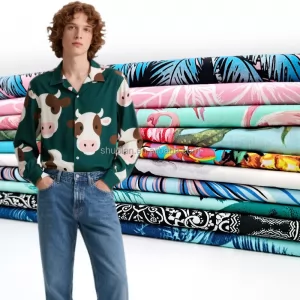 China Wholesale Cotton Polyester Textile Shirt Fabric Tc Poly Cotton Poplin Shirts Fabrics for Men
China Wholesale Cotton Polyester Textile Shirt Fabric Tc Poly Cotton Poplin Shirts Fabrics for Men  A Special Collection Saudi Arabian Hot Selling TR Shine Winter Muslim Men Fabric English Selvedge Uniform Suiting Fabric
A Special Collection Saudi Arabian Hot Selling TR Shine Winter Muslim Men Fabric English Selvedge Uniform Suiting Fabric 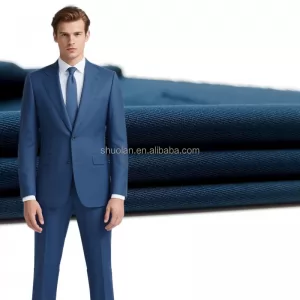 Polyester Viscose TR Suiting Mens Suit Fabric for Wholesale and Garment
Polyester Viscose TR Suiting Mens Suit Fabric for Wholesale and Garment  Wholesale Light Breathable Summer Splendor Vacation Style Shirt and Skirt 3D Printed 100% Rayon Viscose Fabric
Wholesale Light Breathable Summer Splendor Vacation Style Shirt and Skirt 3D Printed 100% Rayon Viscose Fabric Newsletter Subscription
Get the latest trading information
Copyright © Shijiazhuang Shuolan Textile Factory All Rights Reserved Sitemap | Powered by 